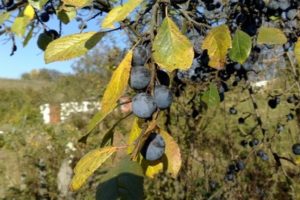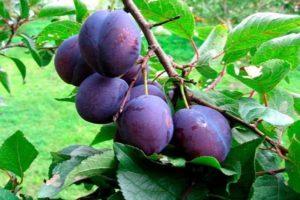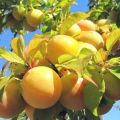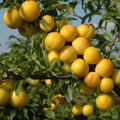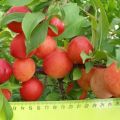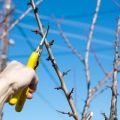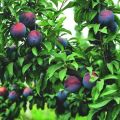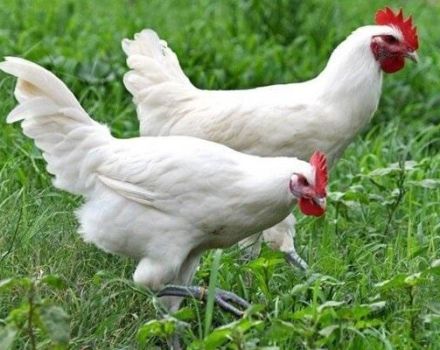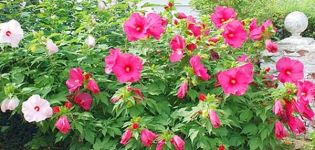Description of the Medovaya plum variety, planting technology, care and pruning, pollinators
Plum Medovaya gained its popularity due to its excellent taste - honey aftertaste, and resistance to adverse environmental factors. This fruit variety is also known among gardeners as a high-yielding, frost-hardy plant with lush flowering. To grow honey plum, you must adhere to the basic rules of agricultural technology and choose exceptionally healthy seedlings.
The history of the origin of the variety
Medovka, the so-called Medovaya plum, was obtained as a result of selection work in the early 50s on the basis of the Donetsk branch of the Institute of Horticulture of the UAAS. Its author was Lilia Ivanovna Taranenko, who has already developed over 50 varieties of fruit crops. The parent pair of the Honey plum became the American large-fruited Jefferson, from which resistance to frost and diseases was obtained, and the Western European Peach, which gave it early maturity and high productivity.
Often honey yellow plum is also called Honey white, but it is more correct to call it Early Renklode. Initially, this variety was adapted to the climate of the steppe zone of Ukraine, but due to sufficient frost resistance, it began to be planted in other areas. Medovka normally grows and develops in the middle latitudes of Russia, but the variety is not listed in the State Register of this country.
Description and characteristics of honey yellow plum
A distinctive feature of the Medovaya plum is its tallness, the tree grows up to 7 meters and has a spreading crown, which suggests a large area for its cultivation. The crown is almost 5 meters in diameter, but the plant has no tendency to thicken. According to the description of the variety, honey yellow plum forms fruits weighing 55 grams. They stand out in a spherical shape, waxy bloom, as they mature, their color changes from white to yellow with an amber tint.
The pulp of the plum is quite sweet, juicy, and slightly sour. Fully ripe fruits have a distinct plum aroma. Tasting grade score 4.5 points out of 5.
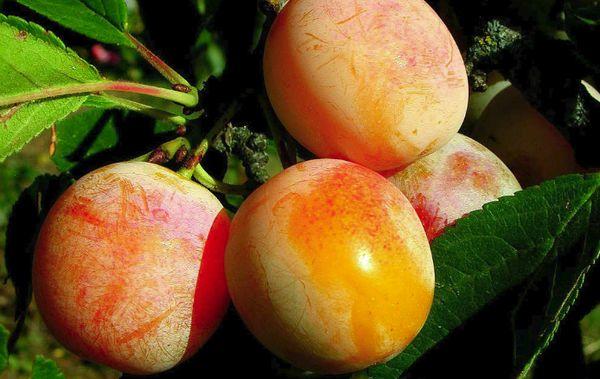
Advantages and disadvantages
Experienced gardeners distinguish among the positive characteristics of the honey plum variety:
- Undemanding plant to growing conditions.
- Sufficient level of frost resistance (up to -30 degrees) and returnable spring frosts.
- Resistant to dry weather, heat.
- High yield rates (35-40 kg of fruit can be removed from one tree).
- Begins to bear fruit 3-4 years after planting in a permanent place.
- Excellent consumer and commercial qualities.
- The crop is not afraid of long distance transportation.
- The fruits have a universal purpose.
- Resistance to moniliosis.
Due to the ability to give a stable and plentiful harvest of plums, Honey needs props, otherwise the trunk may split.
Pollinators for the variety
Plum Honey yellow is a self-fertile plant, without additional pollination to get the maximum possible yield is unlikely to succeed. Its effective pollinators are plum varieties such as Vengerka Donetskaya early, Vengerka Donetskaya, Renklod Karbysheva. If the site is small, then the desired effect can be achieved by grafting specific cuttings. Alternatively, in the area of 50-60 meters, you can plant other varieties of plums with an early flowering period.
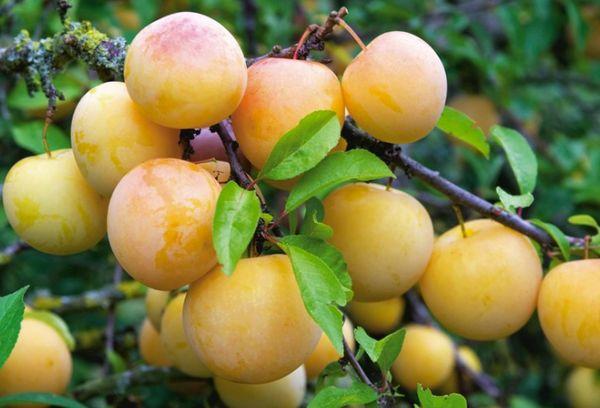
Growing a tree
Properly carried out planting work increases the chances of obtaining high yields.
Choice and timing of landing site
It is optimal to plant honey plum in early spring - in March, when the weather is warm. Propagated by seedlings. Preparatory measures are carried out in October. In the southern regions, planting plums can be done in the fall, most importantly, fertilize the site with humus and lime two weeks before the day of planting.
Plum Medovaya grows better and bears fruit in clearings well-lit and protected from through winds, where the groundwater table is low. The soil for planting Medovaya plum can be clay and sandy. So that the fruits are sweet and juicy, and the tree does not hurt, it is necessary to maintain a distance of 3-5 meters between adjacent plantings and this variety.
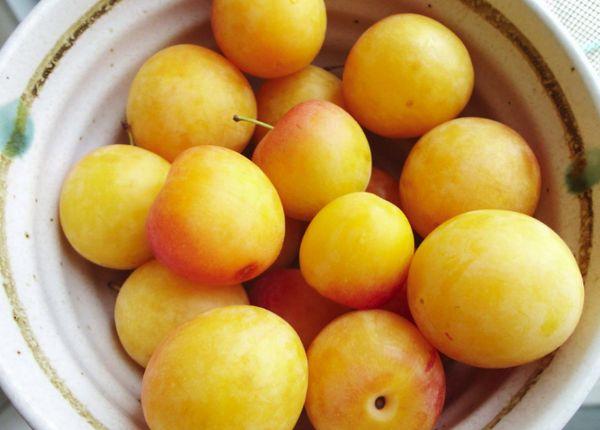
It is effective to place the Honey plum near the elderberry, which protects it from small aphids; also, neighbors can be: cherry, sweet cherry, peach, apricot and apple tree. But currant bushes, pear, birch, walnut and conifers do not get along with Medova plum.
Seedling preparation
It is recommended to purchase honey plum in nurseries or specialized retail outlets. When choosing seedlings, you should pay attention to the root system, it must be well developed, without traces of mold and disease.
The trunk should not contain any damage, and there should be live fruit buds on the branches. The height of a young Medovaya plum should be no more than 1.5 meters.
If you plant tall seedlings, then the process of adaptation, rooting will be slow and painful for the plant. When buying a plum with a closed root system, planting is carried out together with an earthen clod. Before planting, it is recommended to treat open roots with Kornevin's solution, keeping them in it for 2-3 hours.
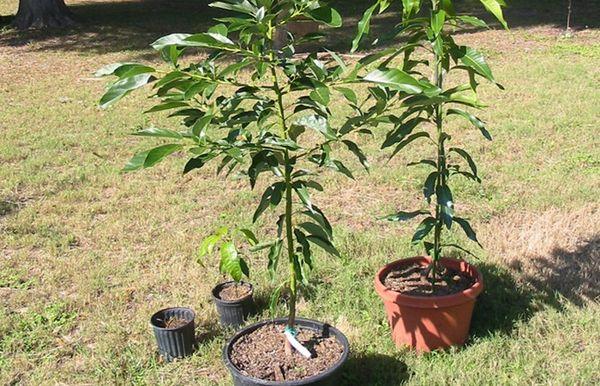
Landing technology
The algorithm of actions regarding planting the Medovaya plum in a permanent place provides for:
- Digging a pit. The top layer of soil 30 centimeters thick is removed to the side, and the rest is removed completely, it is not suitable for draining. The dimensions of the foundation pit are 60 × 60 centimeters.
- Installing a wooden peg in the pit for garter the Medova plum, if its roots are open.
- Laying of a drainage layer from brick fight, crushed stone. Moisture should not stagnate in the ground.
- The introduction of a nutrient composition from fertile soil, cow manure (2 buckets), wood ash (500 grams), superphosphate (100 grams) and potassium chloride (85 grams).
- Placing a seedling in the center of the pit. If the underground part is open, then the roots should be straightened to the sides.
- Sprinkling honey plum roots. It is not worth deepening the root collar, it should be 5 centimeters higher from the soil level. To avoid voids, the soil is carefully compacted.
- Irrigation using 2 buckets of water.
To preserve moisture in the trunk circle and from weeds, the soil is mulched with peat.
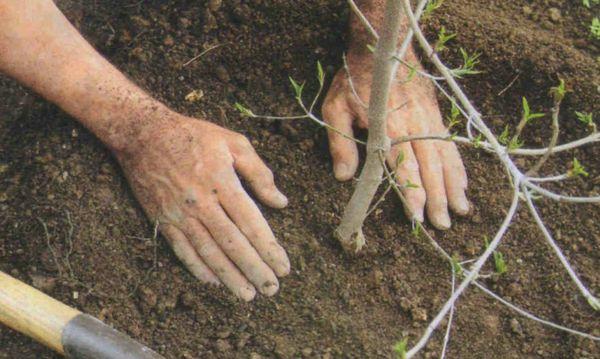
Care rules
In order for the garden planting not to hurt and to consistently bear fruit, it is necessary to provide it with appropriate care.
Watering and fertilizing
Plum soil needs to be moistened after the end of the flowering phase, at the stage of ovary formation, fruit ripening and before wintering. Consumption for each adult planting is 5 buckets of water, the soil should be moistened 40 centimeters deep. The frequency of watering depends on the weather conditions, if there is little precipitation, then the procedures are done more often.
The first time the honey plum is fed a year after planting. In the spring, urea is added (180 grams per 30 liters of water), in the summer the working fluid of Nitrofoski (200 grams per 30 liters of water). And in the fall, a mixture of superphosphate and potassium sulfate (50 grams of each product).
For fruiting plums Honey, the feeding procedure is done before the flowering phase, using urea (180 grams), potassium sulfate (180 grams) and water (30 liters). The second manipulation is performed during the ripening period of the fruit, using a mixture of urea (180 grams), Nitrofoski (220 grams) and water (30 liters).
Pruning process
The first pruning of honey plum is carried out a year after the determination to a permanent place. All incompetent parts of the crown are subject to removal. Such manipulations are performed 3 times a year. Young plants are pruned in early spring, before sap flow begins.
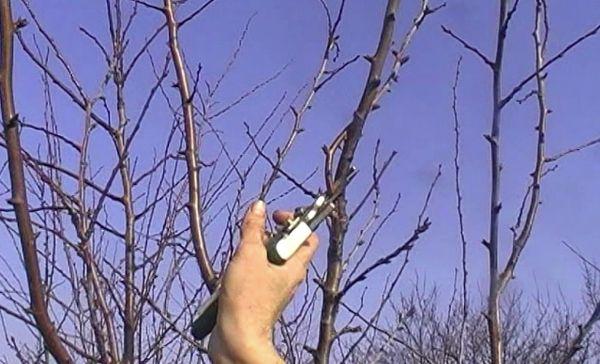
The central conductor of the annual plant is shortened to 1.5 meters, and the lateral branches, located at a level of 50 centimeters from the ground, are completely removed. The summer crown shaping procedure involves cutting the side branches by 20 centimeters. Before wintering, the fruit bearing and damaged branches are cut off. Anti-aging manipulation is performed when the plum reaches 15 years of age.
Preparing for the winter period
Before wintering, it is necessary to do water-charging irrigation, cover the soil with a mulch layer of 15 centimeters, using peat or manure for this purpose. Preparatory measures also include whitewashing not only the tree trunk, but also its skeletal branches. To protect the plant from freezing temperatures, paper and burlap, which are wrapped around the plum trunk, will help.
Treatment against diseases and pests
Plum Honey, although it is distinguished by increased immunity to major diseases and harmful insects, still must be treated with special preparations. For prophylactic purposes against the sawfly, scale insects, small aphids and weevils, it is effective to use a solution of Karbofos, Nitrafen, Chlorophos. And drugs such as copper sulfate and Bordeaux mixture work well against rust, fungal infections, and perforated spot.

Harvesting and storage of crops
The honey plum is harvested from mid-July to early August. Harvest in the evening and in dry weather, starting from the lower tiers. The fruits are placed in wooden boxes and stored indoors at a temperature of 0-1 degrees and an air humidity of 86-90%. The shelf life under such conditions is 2 months.
Plum Honey is an excellent solution for regions with severe frosts. Growing a richly fruitful tree is not so difficult if you follow the basic planting and maintenance guidelines.
